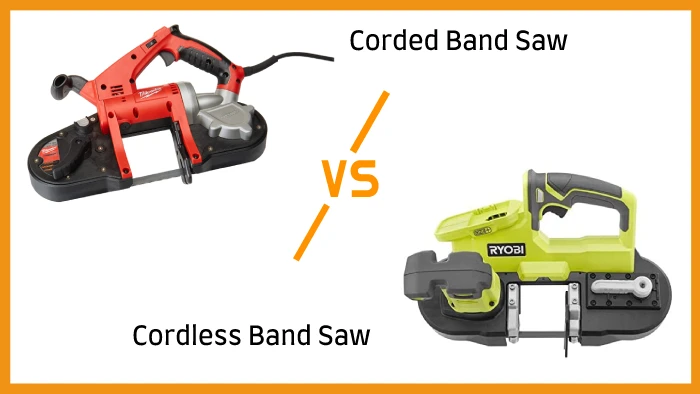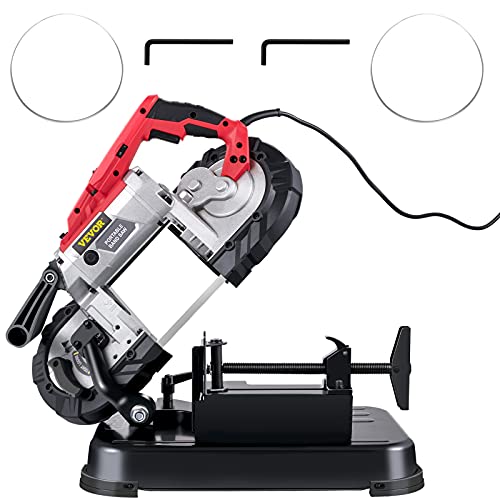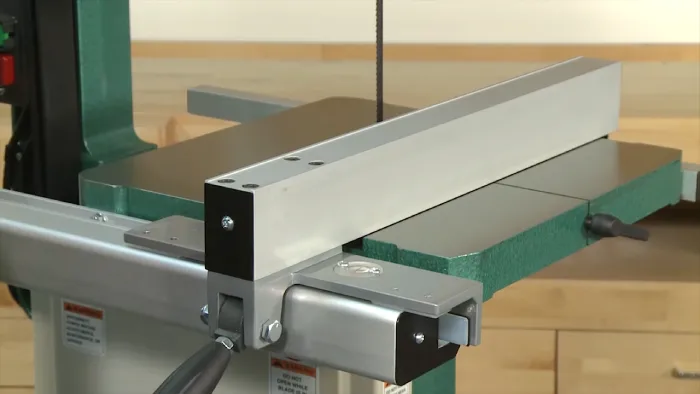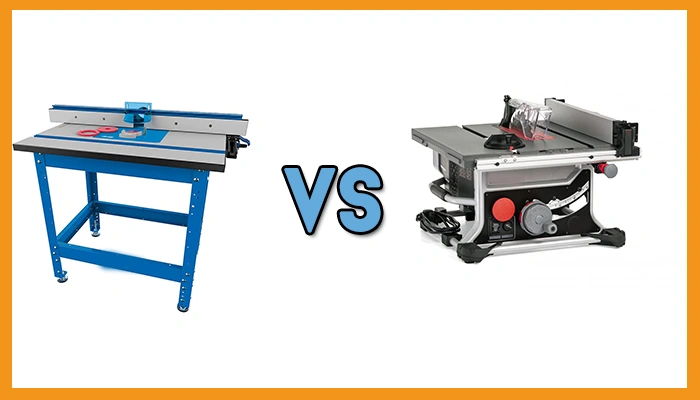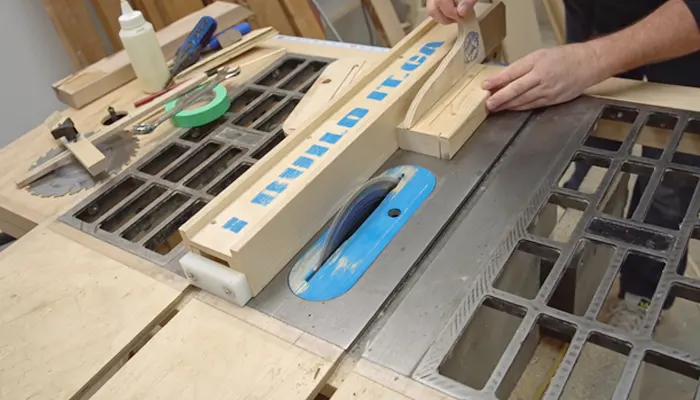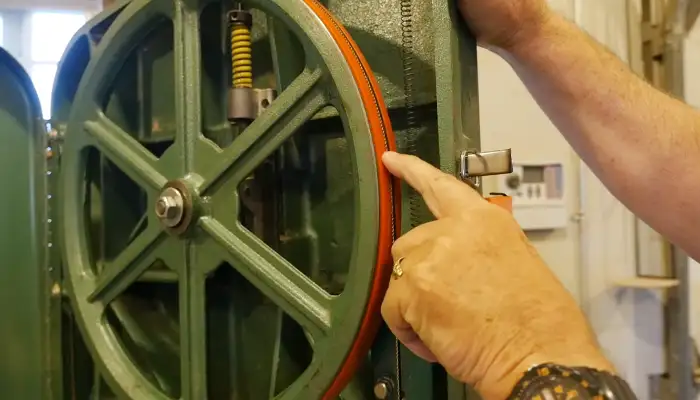Corded vs Cordless Band Saw: 9 Key Differences
Bandsaws are essential woodworking tools that are vital for creating intricate cuts, curves, and shapes in a variety of materials. But as you seek to purchase a band saw, you may find that the choice between corded and cordless models is a critical consideration.
As a woodworking enthusiast, I researched this topic and found some differences that could significantly impact your decision. The primary divergence lies in power sources and runtime.
Corded band saws rely on a continuous electrical supply, while cordless counterparts operate on rechargeable batteries, offering unparalleled mobility.
Weight and portability also differ, with corded models tending to be heavier and more stationary, while cordless band saws boast lightweight designs suitable for on-the-go projects.
I will discuss the differences between corded and cordless band saws, enabling you to decide what is best when purchasing this tool.
- 5-inch cutting capacity, versatile applications
- Variable speed, 60-420 ft/min flexibility
- Powerful 10-amp motor for efficiency
- Lightweight design, only 14.5 pounds
- Adjustable handle, reduces user fatigue
- Powerful 1100W pure copper motor
- Large 5-inch cutting capacity
- Ergonomic design for comfortable use
- Adjustable speed and angle base
- Suitable for various materials cutting
9 Differences Between Corded and Cordless Band Saw
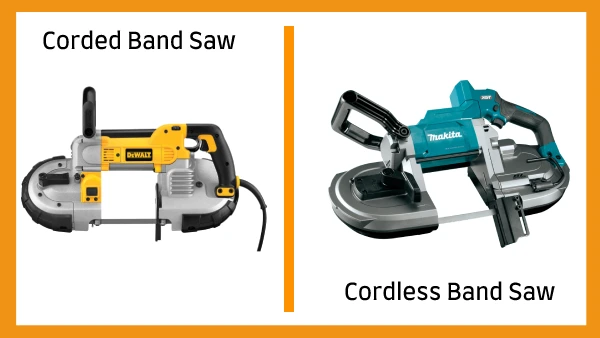
Corded and cordless band saws differ in various aspects, including the following:
- Power source and runtime
- Weight and portability
- Cutting capacity
- Blade speed
- Blade size
- Durability
- Noise
- Safety
- Price
1. Power Source and Runtime
The primary difference between corded and cordless band saws I have found is their power source. Corded band saws are powered by electricity from a power outlet, while cordless band saws run off on rechargeable batteries.
This allows cordless band saws to be used with greater mobility, as they can be taken on the go and used in locations that do not have access to a power source. Unlike cordless band saws, corded band saws require an electrical outlet to operate and are limited in their length because of their power cords.
As corded models are powered directly from the outlet, they usually have a continuous power supply and do not require any downtime for recharging.
In contrast, cordless models have a finite runtime due to their limited battery capacity and may need to be recharged after extended use. Thus, you have to consider how long you anticipate using your tool when deciding which type will suit your needs best.
2. Weight and Portability
Another key distinction between corded and cordless band saws lies in their weight and portability. Corded band saws connected to a power outlet typically have more substantial builds and can be heavier than their cordless counterparts.
Generally, the weight of corded band saws often ranges from 40 to 100 pounds, depending on their size and features. This weight can limit their portability and ease of transportation, making them more suitable for stationary workshop use.
However, based on my findings, there are also corded band saw models that are designed with portability in mind. These portable corded band saws are engineered to be more compact and lightweight than traditional corded models, allowing for easier transportation to job sites or different locations within a workshop.
Conversely, cordless band saws are inherently designed for maximum portability. They are generally lighter, weighing between 8 to 15 pounds on average.
Using rechargeable batteries as a power source allows for greater mobility, making cordless band saws suitable for job sites, outdoor projects, or any location where access to a power outlet is limited or impractical.
3. Cutting Capacity
Corded band saws typically have a larger cutting capacity than their cordless counterparts because of their higher-powered motors and wider blades. The larger motor allows for a faster blade speed and quicker and deeper cuts into thicker materials.
Cordless models are mostly limited to lighter work with thinner materials due to their smaller blades and motors.
4. Blade Speed
Corded band saws often have higher blade speeds than cordless models due to their ability to draw more power from an electrical outlet or generator. This increased power output allows for quicker speeds, leading to faster cutting times than battery-powered models with slower blade speeds.
Also, the larger motor size of the corded model results in higher torque, which increases cutting speed and efficiency when cutting through thicker materials.
5. Blade Size
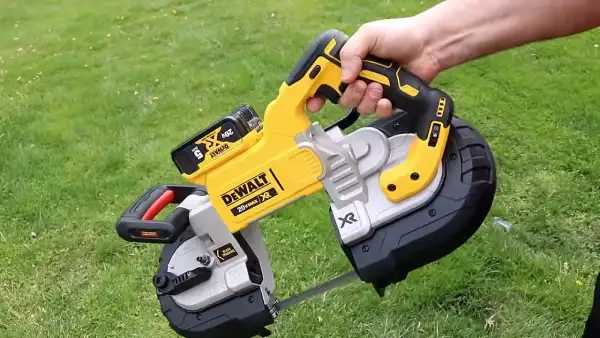
The blade size is another factor that differentiates corded and cordless band saws. Corded band saws typically offer a broader range of blade sizes and cutting capacities. These models are designed for various applications, from fine woodworking to heavy-duty metal cutting.
Due to the larger motors and continuous power supply from the outlet, corded band saws can cut through thicker materials easily. This makes corded band saws suitable for professional workshops with a diverse range of common cutting tasks.
In contrast, due to their compact and portable design, cordless band saws often have smaller blade sizes. Even though battery technology has improved, the limited power of rechargeable batteries limits the blades’ size and the thickness of materials they can cut.
Cordless band saws are generally well-suited for lighter-duty tasks, making them ideal for jobs that require mobility and flexibility.
6. Durability
Corded band saws are more durable than cordless models due to their heavier construction and lack of vulnerable components like batteries. Cordless band saws typically feature smaller motors than their corded counterparts, often resulting in less torque when cutting thicker materials.
Also, cordless band saws feature batteries that will need replacing or recharging over time, resulting in increased maintenance costs that are not necessary with corded band saws.
7. Noise
Corded band saws tend to produce a continuous humming or whirring sound during operation. The noise level may vary depending on the specific model and its motor power, but generally, corded band saws can be relatively noisy.
This noise may be a consideration in shared workshop spaces or situations where a quieter operation is preferred.
In contrast, cordless band saws often operate at lower decibel levels than their corded counterparts. The use of battery-powered motors and technological advancements has allowed manufacturers to design quieter tools.
This reduced noise output can be advantageous in various settings, including residential areas, job sites with noise restrictions, or any situation where minimizing noise is a priority.
8. Safety
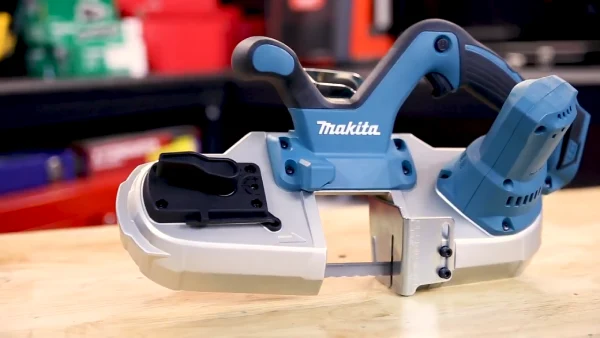
Corded band saws can be a potential electric shock risk due to the possibility of the wire being cut or damaged and coming into contact with skin. To avoid this, cordless band saws use battery-powered power sources, eliminating any danger of electric shock from contact with wet surfaces.
And cordless band saws eliminate the need for regular cord maintenance, making them a more convenient option than corded models.
9. Price
Based on my findings, corded models tend to be pricier due to their higher power capabilities and consistent performance. The convenience of an unlimited power supply adds to the cost.
Portable corded band saws may be more affordable than their larger counterparts, as they sacrifice some power for increased mobility. On the other hand, cordless band saws are generally more budget-friendly, benefiting from compact designs and battery-powered operation.
Comparison Chart Between Corded and Cordless Bandsaws
| Aspects | Corded Band Saws | Cordless Band Saws |
| Power Source and Runtime | Electric outlet, continuous power, no downtime | Rechargeable batteries, finite runtime, may require recharging |
| Weight and Portability | Heavier, 40 to 100 pounds, portable models available | Lighter, 8 to 15 pounds, inherently portable |
| Cutting Capacity | Larger, suitable for thicker materials | Limited to lighter work with thinner materials |
| Blade Speed | Higher, quicker cutting times | Slower due to battery-powered motors |
| Blade Size | Broader range, suitable for various applications | Smaller, limits cutting tasks to lighter-duty projects |
| Durability | More durable, no vulnerable batteries | Less durable, smaller motors and batteries |
| Noise | Can be relatively noisy | Quieter operation due to battery-powered motors |
| Safety | Electric shock risk possible | Eliminates electric shock risk with battery power |
| Price | Generally pricier due to higher power capabilities | More budget-friendly, compact designs, battery-powered |
Can a cordless portable band saw cut metal?
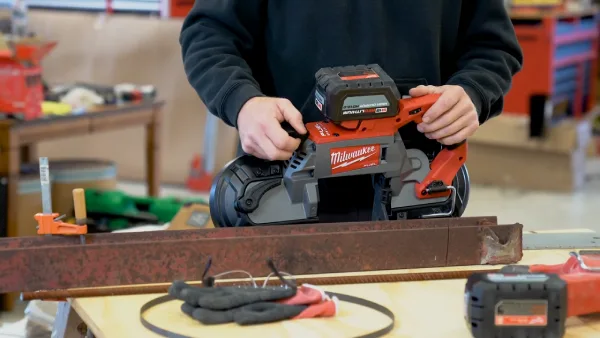
A cordless portable band saw can effectively cut metal. The versatility of these tools allows you to handle various materials, including metals such as steel, aluminum, and copper.
With the right blade designed for metal cutting, your cordless portable band saw can make precise and efficient cuts, allowing you to tackle metalwork tasks without being tethered to a power outlet.
This makes it a convenient and portable option for both professional tradespeople and DIY enthusiasts who need to work on metal projects in different locations.
Just ensure that you choose the appropriate blade and follow safety guidelines to achieve optimal results and ensure a smooth metal-cutting experience with your cordless portable band saw.
Also, you have to clean the bandsaw blade before and after use to maintain its performance. Regular cleaning not only enhances the longevity of the blade but also contributes to the overall efficiency of the cutting process.
How thick can a 12-inch corded band saw cut?
A 12-inch corded band saw typically offers a cutting depth within the range of 6 to 12 inches, referring to the maximum thickness of material it can handle. This means that the distance from the band saw’s table to the upper blade guides accommodates materials with a thickness anywhere within this specified range.
The actual cutting capacity depends on the specific model and the blade used. To determine the exact capabilities of your 12-inch corded band saw, it’s crucial to consult the manufacturer’s guidelines and specifications.
Ensure that you adjust the bandsaw blade tension and guide appropriately for the material you’re working with to achieve precise and efficient cuts within the specified thickness range.
Choose the Perfect Band Saw According to Your Woodworking Needs
Consider your specific needs and preferences when choosing between a corded and cordless band saw. Consider the information that I have shared with you about power source, weight, cutting capacity, and other key differences.
Corded models offer consistent power and larger cutting capacities, ideal for heavy-duty tasks in a workshop.
On the other hand, cordless band saws prioritize portability, making them perfect for on-the-go projects and locations without easy access to power outlets.
Whether you prioritize power, mobility, or balance, understanding these key differences will guide you to the band saw that best suits your woodworking requirements.
So, weigh the options, envision your woodworking projects, and make the cut that fits your craftsmanship seamlessly.
- Powerful 10 Amp Motor for Versatility
- Industry-Best 5-Inch Deep Cut Capacity
- Durable Design for Jobsite Reliability
- Variable Speed Control for Precision
- Ergonomic Grip and Comfort Design
- Cordless, 18 Volt power source
- Deep Cut capacity up to 5″
- High-Speed Steel blade material
- Integrated brake for safety
- Lightweight design at 15 pounds
Last update on 2025-11-27 / Affiliate links / Images from Amazon Product Advertising API

